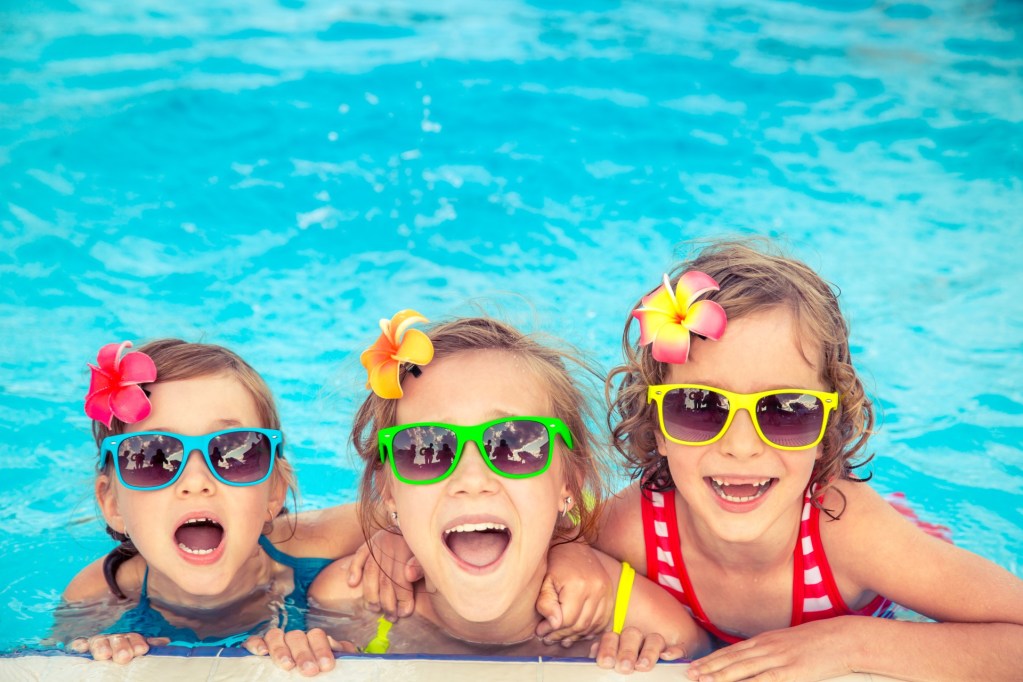Summertime swimming or winter lessons at the YMCA — your child could have fun in the water any time of year. But even if your child knows how to swim, seeing their head go under causes any parent to have a slight panic attack. Water safety is always on a parent’s mind.
One thing parents want to watch out for when a child is having a blast in the pool is wondering if they took in too much water when they went below the surface. If your kid comes up choking on water, here’s what you need to know about dry drowning so you can check on your child.
What is dry drowning?

Dry drowning, sometimes referred to as secondary drowning, is a respiratory impairment in which a person cannot breathe because water is inhaled into the airway, causing muscle spasms that further restrict their ability to breathe. The water doesn’t go into a person’s lungs but through the mouth or nose straight into the airway. The vocal cords spasm and shut over the windpipe, making breathing difficult. If you’ve choked on water that went down the wrong pipe, you know what happens and how scary that is.
What is secondary drowning?
You have probably heard of another term associated with dry drowning, and it’s easy to get the two confused. Secondary drowning occurs when water is ingested and goes to the lungs instead of the airways. The lungs swell and become inflamed, creating a higher level of carbon dioxide and lower levels of oxygen.
How long does dry drowning take to happen?
It can take minutes or hours for the water to cause damage, which makes it especially dangerous for children. Monitoring a child after they had an episode while coming out of the water is crucial. You need to know it was just a bit of sputtering instead of aspiration.
The good news is you don’t have to worry about dry drowning after 24 hours. Once that time has passed, without symptoms, your child is in the clear.
Dry drowning symptoms

- Choking or sputtering when resurfacing
- Constant and consistent coughing
- Becoming tired for no reason (not because they were swimming)
- Suddenly becoming nauseous or vomiting
- Being “out of it” or not coherent, not acting like they normally would
- Irregular breathing, fast-paced breathing
Choking and sputtering are initial signs to look out for, but others could progress throughout the day. Coughing, trouble breathing, vomiting or feeling sick, and becoming lethargic are all symptoms.
If your child suddenly seems extra sleepy or tired while acting a little out of it or becomes nauseous, keep them awake and call the doctor. Breathing that becomes way too fast or irregular needs to be looked at, as well.
How to prevent dry drowning

Water safety is the most important and successful way to prevent dry drowning. Too many accidents happen because a parent or adult thinks another parent or adult is watching the kids. It’s never a bad idea to wear life vests if your children will be in water. Even if the child knows how to swim, there is no shame in keeping them in a life vest for an extra layer of safety.
Parents should always know where their child is in the water and look for hazards or trouble spots. Make sure you are CPR certified, and it wouldn’t hurt to take a refresher course. CPR classes are offered for children at libraries and community centers, so sign up your kids.
If you didn’t do it when your children were born, make sure all emergency numbers for local police and fire departments are in your phone in case you think your child might be dry drowning and you need help. If the pool or water is in your yard, make sure you have followed all safety regulations to ensure no one could accidentally get in.
How dry drowning is treated
For the most part, a child will be observed. If you notice your child struggling to breathe, to stay awake, or to remain coherent, a medical professional would want to take vitals and monitor the child. Severe cases would require X-rays or for the person to go on oxygen, and for worse scenarios, intubated until the lungs are back to full capacity and the blood is flowing properly.
Dry drowning information

Dry drowning isn’t a medical term
Dry drowning isn’t a technical medical term. The American Red Cross, the American Heart Association, and the Centers for Disease Control and Prevention only validated the terms nonfatal drowning without injury, nonfatal drowning with injury, and fatal drowning. They kept it pretty simple.
You have to be submerged
Your child won’t be at risk for dry drowning if their sibling splashes a little water in their face or quirts them in the mouth with a squirt gun. For dry drowning to be possible, they need to have been completely submerged in water, with their entire face under.
It isn’t that common
Dry drowning isn’t something that happens all of the time — it’s pretty uncommon for a child to drown this way. A lot of deaths that look like dry drowning are drownings with other underlying factors, such as heart conditions or having an existing illness.
If you are ever unsure, call your doctor
It’s never wrong or silly or overprotective to ask the doctor if you have any concerns. But you should call the doctor if you notice any of the symptoms that could point to dry drowning. If your child cannot breathe or is having trouble staying awake, take them to the hospital or emergency room.
We all want to enjoy our summer vacations and any time we get away from school and work to relax as a family. As parents, we know mixing children and water puts you on edge. But you can be as prepared as possible in understanding how to prevent drying drowning and what to do if you think your child is showing symptoms. Now that you are more knowledgeable about your child around water, have more good times than stressed times.




